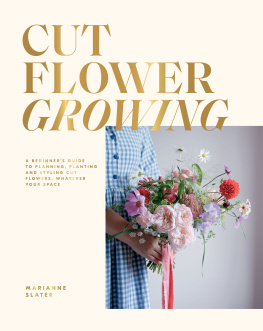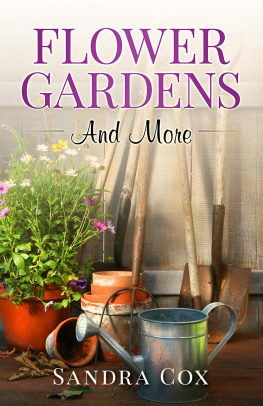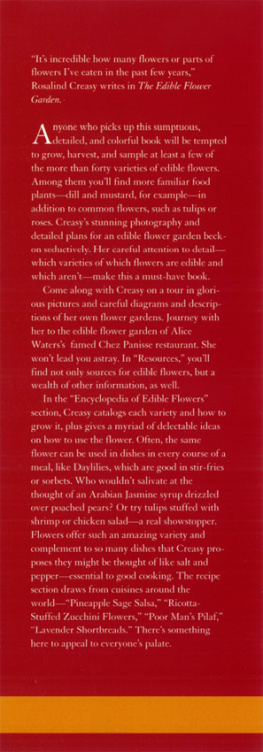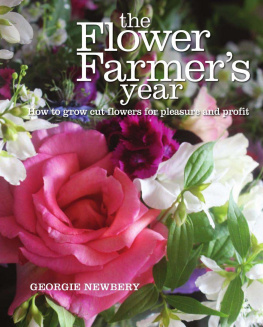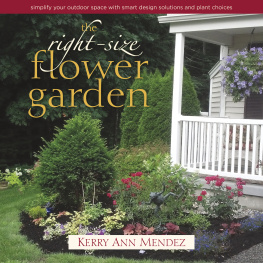Pretty Tall Bloomers: Uplifting Garden Flowers
G. Edwin Varner
Published by Green Thumb Publications, 2020.
While every precaution has been taken in the preparation of this book, the publisher assumes no responsibility for errors or omissions, or for damages resulting from the use of the information contained herein.
PRETTY TALL BLOOMERS: UPLIFTING GARDEN FLOWERS
First edition. September 23, 2020.
Copyright 2020 G. Edwin Varner.
ISBN: 978-1393456414
Written by G. Edwin Varner.
10 9 8 7 6 5 4 3 2 1
T his ebook is about taller-growing flowering plants you can add to your flower beds and borders. Many of them provide excellent color and are easy to grow from seed. You can purchase several of these plants from garden centers or online nurseries (especially for the rare types).
This guide is not the definitive listing of all height-based bedding plants. There are many other taller species and varieties of annuals, perennials, and bulbs you can include in your garden beds and borders. I selected the plants listed in this ebook to provide you with taller flowers averaging five feet or more in height.
The information on each plant may contain inaccuracies about their growing conditions and hardiness.
Each plant has its USDA hardiness zones, best growth conditions, and recommended varieties to find and grow. Please be aware these plants may not be available, discontinued, or replaced for better varieties by nurseries.
The following plants use their Latin name first, then by a common name or names.
The digital photos are of the flowers at my home, garden centers, public gardens, and Creative Commons (CC0) licensed images.

CC0 Photo courtesy of Pixabay.com
E verything old (and tall growing) is new again.
Years ago, gardeners planted beautiful flowers of all types and sizes in their gardens. They placed taller-growing flowers toward the back of a border to avoid growth conflicts with smaller plants. Towering delphiniums and foxgloves shared beds and borders with small petunias and marigolds. This pattern of planting became known as cottage gardening. Everyone would enjoy seeing abundant flowers rising from the ground to above their head from spring to fall.
You can view representations of these lovely gardens nestled near small cottages in old paintings. Even grand estates embraced three-dimensional flower gardening.
Then something happened. Peoples attitudes toward flower gardening changed. Flower beds became draped with a single sheet of dwarf, monochromatic flowers. Mixtures of similar plants with closely related colors and sizes also became the norm.
Years ago, I owned and operated a small plant nursery growing several perennials and annual bedding flowers. My pet-peeve with customers was their constant worry that the flowers would grow too tall. Any plant growing above three feet caused a wide-eyed panicky-look on their face. They considered taller growing annuals and perennials unappealing, in contrast to the nice-and-short flowers. I eventually gave up on offering any tall perennials.
Lets explore which annual, perennial, and bulb flowers you can grow to provide an uplifting look to your garden. This publication does not include shrubs or trees, for they take longer to grow and bloom. Consider them as a work in progress for future development and enjoyment.
Now is the time to change your perception of flower gardening by not always looking down at flowers, but also to stare upward to them.
Dont be afraid to raise your flower gardens to new heights of attraction and pleasure. Instead of planting boring beds of ankle-to-kneecap level flower displays, its time to cultivate and admire the following plants displaying colorful eye-level and some sky-level blossoms.
To find plants or seeds of the following species and varieties, please visit your nearby larger garden centers or search online to find specialty nurseries that grow and sell them.
Acanthus spinosus; mollis

I assume Smokey shops in the big and tall clothing stores.
I have to clarify what the common name signifies. It is one of those head-scratching names. We associate breeches with mens clothing. My first thought was it is a miss-spelling of britches, as in raggedy pants. No, breeches are almost like trousers, but the legs abruptly end just below the knee. Long stockings cover the rest of the legs.
Breeches were standard attire for men before the mid-1800s. It fell from acceptance when tailors added extra material to extend down to the ankles. Men were probably giddy over wearing their first pair of long pants. Today, people still wear them in horse riding competitions and fencing, but the modernized name is britches.
Now that we have learned the brief history of mens pre-trousers (at the beginning of a gardening ebook, for heavens sake), what do bears (like burley blue jean-clad Smokey Bear) have to do with them and this garden plant? Well, from here, things get more bizarre.
It all begins with the size and shape of this plants thistle-like leaves. The edge of the leaves has an attractive spiny or toothed serration. Greek and Roman artisans and builders loved the leaves artistic appearance. They went positively gaga over chiseling the Acanthus leaf pattern on any marble structure that needed some decoration. If you need more proof of this love affair, consider Greeces national flower is the Acanthus .
Name-dropping taxonomist Linnaeus gave it the Latin name of Acanthus sativus branca ursina . The English translation amounts to something like Spiny Bear Bract. The interpretation was of the leaves on the flower stalks appearing as the curving claws of a bear.


